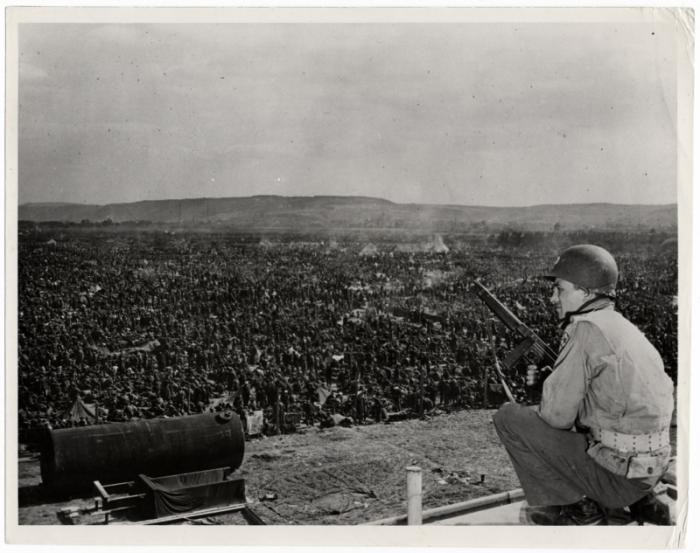
Encircling the Ruhr
The Allied capture of more than 300,000 German troops in the industrial Ruhr region was a major milestone in the war, helping to bring about the surrender of Nazi Germany several weeks later.

When the Allies were firmly established east of the Rhine River at the end of March 1945, they were within reach of their goal of encircling and capturing the Ruhr, the industrial center of western Germany. Units of the US First Army extended their bridgehead at Remagen to include the cities of Bonn and Koblenz. Attacking eastward on March 24, 1945, they were soon racing into Germany as part of a double encirclement of the Ruhr. At the same time, part of the US Ninth Army moved east from the bridgehead at Wesel, formed following the massive river and airborne assault several days earlier, as the second pincer in the operation.
On April 1, 1945, armored divisions from both the First and the Ninth Armies met at the town of Lipstadt, trapping German Army Group B inside the Ruhr. Within three days, the equivalent of four American army corps had tightened the grip around the pocket. For the next two weeks, US troops attacked into the Ruhr to destroy the German forces trapped there. After several abortive counterattacks, the Germans began to retreat from the north side of the pocket, although Hitler had refused the request of the German commander, Field Marshal Model, to withdraw his badly outgunned forces. By April 14, 1945, the American advance had split the pocket in two as troops of the First and Ninth Armies met again, this time at the town of Hagen in the heart of the Ruhr.
Rather than defy Hitler by formally surrendering the remnants of his Army Group, Field Marshal Model dissolved it instead. German troops began surrendering by the thousands. The rapidly shrinking eastern pocket surrendered on April 16, followed two days later by the remains of the western pocket. More than 300,000 Germans became prisoners of war, constituting the largest single German surrender in western Europe during World War II.
Hitler committed suicide within two weeks of the Ruhr surrender; a week later, World War II in Europe came to an end.
Critical Thinking Questions
- At the time of this campaign, did any American units encounter concentration camps? If so, investigate their response and documentation.
- How did this campaign affect the course of the war?
- What was the relationship between the progress of the war and the mass murder of Europe’s Jews?

